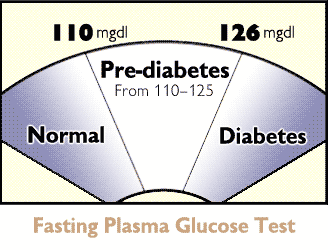
The main goal of type 2 diabetes treatment is to keep blood sugar levels within the normal range. However, the normal blood sugar levels is really difficult to maintain. But, if blood sugar levels can be closer to the normal range, then the likelihood of complications, temporarily or long-term, becomes less and less. This requires the monitoring of blood sugar levels regularly whether conducted individually with a blood sugar test at home or done in the nearest laboratory.
Treatment of diabetes include weight control, exercise and diet. Someone who suffer from obesity and type 2 diabetes will not need treatment if they lose weight and exercise regularly. However, most people find it difficult to lose weight and doing regular exercise. For that, it is usually given insulin replacement therapy or hypoglycemic drugs (lowering blood sugar).
Type 1 diabetes can only be treated with insulin, but type 2 can be treated with oral medication. If weight control and exercise are not successful then the doctor could give the drugs that can be taken orally or use insulin.
Here are the division of pharmacological therapy for diabetes:
1. Oral Hypoglycemic Drugs
Sulfonylureas groups often can reduce blood sugar levels adequately in people with type II diabetes, but not effective in diabetes type I. Examples are Glipizide, Glyburide, Tolbutamide and Chlorpropamide. These drugs lower blood sugar by stimulating the release of insulin by the pancreas and increase its effectiveness.
Other drugs, namely Metformin, does not affect insulin releases but increases the body's response to insulin itself. Acarbose works by delaying the absorption of glucose in the intestine.
Hypoglycemic medication by mouth usually given to type II diabetes if diet and exercises fail to lower the blood sugar levels. These drugs can sometimes be given only once (early morning), although some patients require 2-3 times a day. If hypoglycemic medication can not control blood sugar levels properly, diabetic patient may need to be given insulin injections.
2.Insulin Replacement Therapy
In type 1 diabetes, the pancreas can not produce insulin, so insulin must be given as a replacement. Giving insulin can only be done through injection, insulin was destroyed in the stomach that can not be given by mouth (swallowed). Meanwhile, the new forms of insulin (nasal spray) is under study. At this time, new forms of insulin is not able to work well because of different absorption rates poses problems in determining the dose.
Insulin is injected under the skin into the fat layer, usually in the arm, thigh or abdominal wall. It is usually used a very small needle so as not to feel too much pain.
Injection of insulin often leads to the formation of fatty deposits (so skin looks bumped) or damage to fat (which grooved the skin). These complications can be prevented by replacing the injection site and change the type of insulin injected. On the use of synthetic human insulin, it is rarely happen resistance and allergy.
[Please read also: History of Insulin Discovery]
Diet management for a diabetic is very important. Usually patients can not eat too many sweet foods and should eat in a regular schedule. People with diabetes tend to have high cholesterol, and because of that, it is recommended to limit the amount of saturated fats in food. But the best way to lower cholesterol is to control blood sugar levels and body weight.
[Please read also: Diabetics Diet]
All patients should understand how diet and exercise can control the disease. They must understand the importance of how to avoid the occurrence of complications. Patients also must give special attention to foot infections, so the nails should be cut regularly. It is also important to check our eyes health condition, so we could note the changes of blood vessels in the eye.









